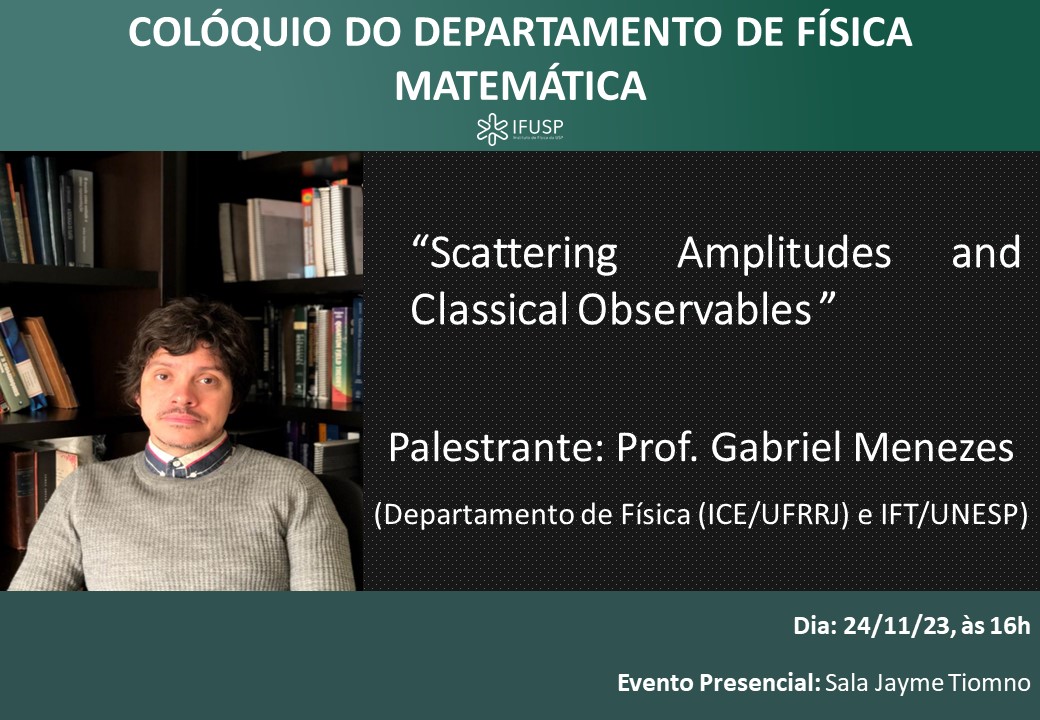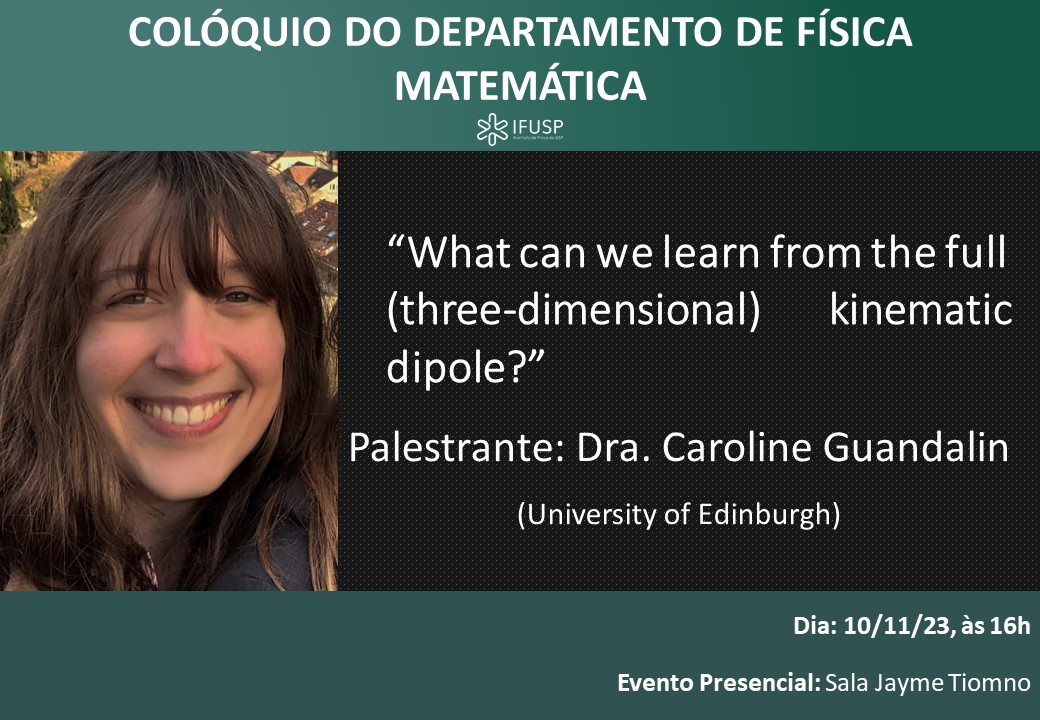Emulators for beyond-LCDM models and photometric probes | Colóquio DFMA


Abstract: Accurate modeling of compact binaries is essential for gravitational-wave detection and parameter estimation, with spin being an important effect to include in waveform models. In this seminar, I will show how to derive new post-Newtonian (PN) results for the conservative aligned-spin dynamics at next-to-next-to-leading order for the spin3 and spin4 contributions, in addition to the next-to-leading order (NLO) spin5 and spin6 contributions. One approach we follow is the Tutti Frutti method, which relates PN and gravitational self-force (GSF) results through the redshift and spin-precession invariants, by making use of the simple dependence of the scattering angle on the binary mass ratio. However, an ambiguity arises at the NLO spin5 contribution, due to transcendental functions of the Kerr spin in the redshift; this is also the order at which Compton amplitudes calculations are affected by spurious poles. Therefore, we discuss an additional approach to determine the NLO spin5 and spin6 dynamics: using on-shell Compton amplitudes dictated by homogeneous solutions of the Teukolsky equation, the later solved non-perturbative in terms of the Nekrasov-Shatashvili Function.
Dia 15/08/2024 (quinta-feira), às 16h, na Sala Jayme Tiomno

Resumo: Non-Markovianty of open quantum systems dynamics is a physically relevant property which is usually associated with the backflow of (quantum) information. Using this paradigmatic marker, we develop an operational framework to investigate how non-Markovianity for qubit dynamics can be distilled when many copies of the channels are used, possibly allowing for a stronger effect on the backflow of information.


Resumo: Há cinquenta anos, um trabalho seminal de Stephen Hawking foi publicado na revista Nature. Nele, foi-se anunciada a radição emitida por buracos negros que levaria o nome do autor. Desde então, o fenômeno foi intensamente estudado por inúmeros autores e influenciou diversos campos da física teórica. Neste colóquio, exploramos a relevância da descoberta e algumas das repercussões que ainda hoje são estudadas. Daremos ênfase a avanços recentes na termodinâmica de buracos negros, ao chamado "paradoxo da informação" e ao relacionado "paradoxo do tempo de Page".

Abstract: In this talk I would like to discuss the defect renormalization group flows recently found in ABJM theory. In such a setting, we find RG flow trajectories that may or may not preserve some subset of the original N=6 supersymmetry. The $\beta$-functions have a rich spectrum of fixed points representing (super)conformal defects that provide a rich arena to study quantum effects in 2+1 dimensional theories. This sheds new light on universal information about the theory, such as the Bremsstrahlung function, and possibly on the holographic dual setting of strings in AdS4xCP3.

Resumo: Gravitational-wave interferometers can be used to probe the existence of dark matter. Different types of dark matter, such as sub-solar primordial black holes, axions and dark photons, could leave different imprints on gravitational-wave detectors. While arising from physically different sources, such signals share common traits, and can be searched for with similar methods. In this talk, I will explain how persistent, quasi-monochromatic signals in ground-based detectors could arise from each of the aforementioned dark matter candidates. I also describe some of our search methods and summarize results from the most recent observing runs of Advanced LIGO, Virgo, and KAGRA.

Resumo: Given the exponential growth on the upcoming supernovae data available, the possibilities of rigorously testing the cosmological principle becomes ever more real. One of the ways to do so is by measuring the multipole decomposition of the Hubble and deceleration parameters. In this presentation, I will discuss the observational-theoretical approach, initially introduced by Kristian & Sachs, which allows for the interpretation of data in non-homogeneous and anisotropic universes. I will also explore the effects introduced by the relative motion between the observer and the reference frame defined by galaxies (the matter frame), demonstrating that the luminosity distance should be corrected in such cases.

Resumo: Scattering experiments play a key role in the understanding of the fundamental aspects of nature. In this respect, scattering amplitudes have a paramount physical significance through their contribution in the calculation of scattering cross-sections, the primary observables in this context. On the other hand, amplitudes have also been applied successfully to assess features of general-relativistic problems. In this talk I will review some basic techniques which are important in the modern research on scattering amplitudes as well as discussing some current trends and future perspectives, with a particular focus on the black-hole binary dynamics and classical observables.

Resumo: Recent studies of our motion with respect to the distribution of matter on large scales have found discrepancies in our peculiar velocity with respect to results obtained from the cosmic microwave background (CMB). These findings raise questions about the Cosmological Principle, a fundamental concept that suggests our velocity should be the same in both the CMB and matter reference frames. In this talk, I will explore the quasar luminosity function (QLF), which describes how quasars are distributed in terms of distance and brightness, and how different QLF models impact the strength of the kinematic dipole. I will also discuss how ignoring the dipole evolution over time leads to different results for our peculiar velocity. Finally, I will explain how this time evolution may provide opportunities to constrain cosmological parameters, with a particular focus on dark energy.